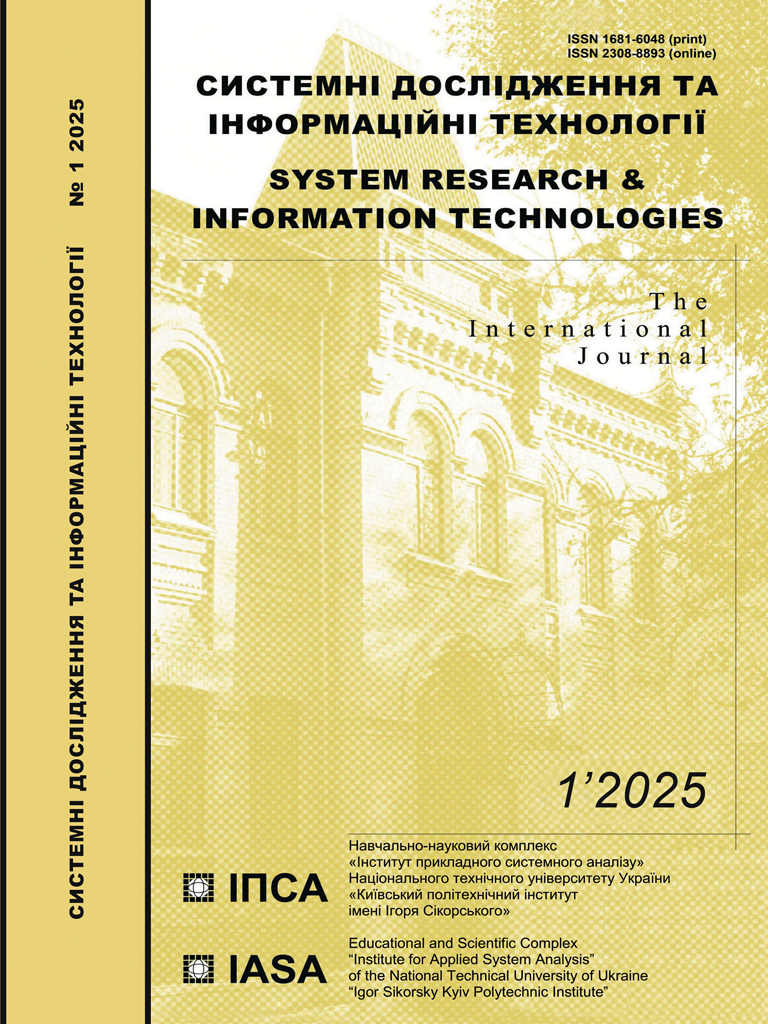Studying the relationship between tuberculosis and socioeconomic, medical, and demographic factors in Ukraine
DOI:
https://doi.org/10.20535/SRIT.2308-8893.2025.1.02Keywords:
artificial intelligence, tuberculosis, incidence, socio-demographic factors, medical factors, demographic factorsAbstract
Ukraine is currently experiencing a new, ongoing tuberculosis offensive. Our study analyzes the impact of various socioeconomic and medical factors, including the number of specialized hospitals, fluoroscopic examinations of the population, the number of healthcare workers, the level of alcohol and drug abuse, and others, on the prevalence of tuberculosis among different demographic groups in Ukraine. Artificial intelligence methods made it possible to identify key factors contributing to the growth or decline in tuberculosis incidence. The results of the SHAP (SHapley Additive exPlanations) analysis, which offers a methodology for interpreting complex machine learning models, shows the most important factors that influence the incidence of tuberculosis in Ukraine. The sensitivity analysis provided more important and detailed information, which confirmed the results of the SHAP analysis.
References
S.S. Chiang et al., “Clinical manifestations and epidemiology of adolescent tuberculosis in Ukraine,” ERJ Open Res, 6(3):00308-2020, 2020. doi: https://doi.org/10.1183/23120541.00308-2020
I. Margineanu et al., “TB therapeutic drug monitoring - analysis of opportunities in Romania and Ukraine,” Int. J. Tuberc. Lung Dis., 27(11), pp. 816–821, 2023. doi: 10.5588/ijtld.22.0667
O.S. Shevchenko, L.D. Todoriko, I.A. Ovcharenko, O.O. Pogorelova, and I.O. Semianiv, “A mathematical model for predicting the outcome of treatment of multidrug-resistant tuberculosis,” Wiad. Lek., 74(7), pp. 1649–1654, 2021. doi: 10.36740 WLek202107117
D. Butov et al., “National survey on the impact of the war in Ukraine on TB diagnostics and treatment services in 2022,” Int. J. Tuberc. Lung. Dis., 27(1), pp. 86–88, 2023. doi: 10.5588/ijtld.22.0563
K. Lönnroth, E. Jaramillo, B.G. Williams, C. Dye, and M. Raviglione, “Drivers of tuberculosis epidemics: the role of risk factors and social determinants,” Soc. Sci. Med., 68(12), pp. 2240–2246, 2009. doi: 10.1016/j.socscimed.2009.03.041
Rifat Atun, Diana E.C. Weil, Mao Tan Eang, and David Mwakyusa, “Health-system strengthening and tuberculosis control,” The Lancet, 375(9732), pp. 2169–2178, 2010. doi: 10.1016/S0140-6736(10)60493-X
M.A. Mujtaba et al., “Demographic and Clinical Determinants of Tuberculosis and TB Recurrence: A Double-Edged Retrospective Study from Pakistan,” J. Trop. Med., vol. 2022, article ID 4408306, 2022. doi: 10.1155/2022/4408306
E.J. Topol, “High-performance medicine: the convergence of human and artificial intelligence,” Nat. Med., vol. 25, pp. 44–56, 2019. doi: https://doi.org/10.1038/s41591-018-0300-7
P. Farmer, “The major infectious diseases in the world--to treat or not to treat?” N. Engl. J. Med., 345(3), pp. 208–210, 2001. doi: 10.1056/NEJM200107193450310
N. Tang et al., “Machine Learning Prediction Model of Tuberculosis Incidence Based on Meteorological Factors and Air Pollutants,” Int. J. Environ. Res. Public Health, 20(5), 3910, 2023. doi: 10.3390/ijerph20053910
E.J. Hwang et al., “Development and Validation of a Deep Learning-Based Automated Detection Algorithm for Major Thoracic Diseases on Chest Radiographs [published correction appears in JAMA Netw Open. 2019 Apr 5;2(4):e193260],” JAMA Netw Open, 2(3):e191095, 2019. doi: 10.1001/jamanetworkopen.2019.1095
S. Tuli, S. Tuli, R. Tuli, and S.S. Gill, “Predicting the growth and trend of COVID-19 pandemic using machine learning and cloud computing,” Internet of Things, 11:100222, 2020. doi: 10.1016/j.iot.2020.100222
A. Rajkomar, J. Dean, and I. Kohane, “Machine learning in medicine,” N. Engl. J. Med., 380(14), pp. 1347–1358, 2019. doi: 10.1056/NEJMra1814259
K.E. Wiens et al., “Global variation in bacterial strains that cause tuberculosis disease: a systematic review and meta-analysis,” BMC Med., 16(1), article no. 196, 2018. doi: 10.1186/s12916-018-1180-x
V. Smelov et al., “Rationale and Purpose: The FLUTE Study to Evaluate Fluorography Mass Screening for Tuberculosis and Other Diseases, as Conducted in Eastern Europe and Central Asia Countries,” Int. J. Environ. Res. Public. Health, 19(14), 8706, 2022. doi: 10.3390/ijerph19148706
R. Zaleskis, A.W. Mariani, F. Inzirillo, and I. Vasilyeva, “The Role of Surgery in Tuberculosis Management: Indications and Contraindications,” in G.B. Migliori, M.C. Raviglione (eds) Essential Tuberculosis. Springer, Cham, 2021. doi: https://doi.org/10.1007/978-3-030-66703-0_15

